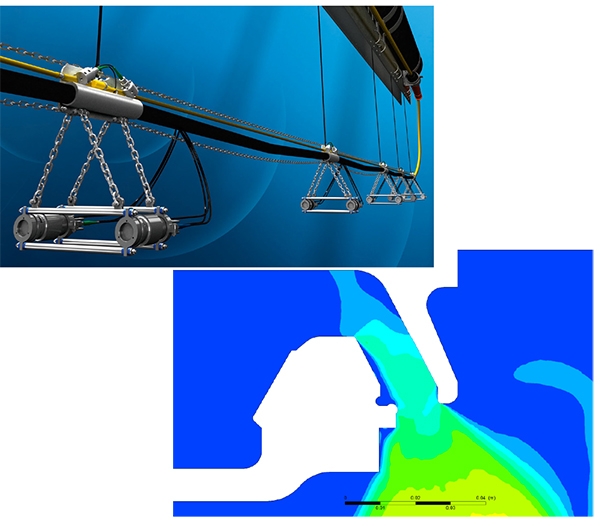Using air for imaging purposes! Geophysicists indeed use pulsed compressed air sources to produce images of the seabed. They generate seismic waves, which reflect off the geological strata of the subsurface and are subsequently detected by an array of sensors towed on the surface. The results are converted into a geological map, which is mainly used for prospecting for natural resources or studying the natural seismic profile of our planet. “In recent years, we have been developing a source model aiming to limit high-frequency transmissions”, explained Julien Large, Sercel R&D manager for marine sources, who specialises in this field.
Our priority? Limit acoustic pollution by significantly reducing transmissions above 200 Hz. Sercel is developing a first cut-out frequency for this purpose, and intends to speed up the development of a second lower cut-out frequency. In order to improve its understanding of the behaviour of these systems, Sercel has opted for digital 3D simulation. “We decided to work with Cetim, which can boast both the necessary skills when approaching a multiphysics problem (acoustics, fluid mechanisms) and the computing resources required for the simulations_”, continued Julien Large.
From modelling to studies: establishing design tips
Cetim starts by producing a digital fluid flow model for this new source before comparing the results of test data provided by Sercel. Our target? Develop a two-phase (water and air) model representative of the waves transmitted at very high speeds for forecasting purposes. This model will be used to simulate behaviour and ultimately identify potential improvements.
“We considered parameters with an effect on the flow coefficient, i.e. the flowrate at which an air bubble is released in the water. This approach allowed us to propose several different designs”, added Benoît Mary, Cetim study manager for digital fluid simulation.
“Thanks to the studies completed, we were able to better identify the physical mechanisms at play in this source model and enrich our ID models; initial prototypes were used to validate the digital models and achieve unrivalled performance levels”, said Julien Large..



